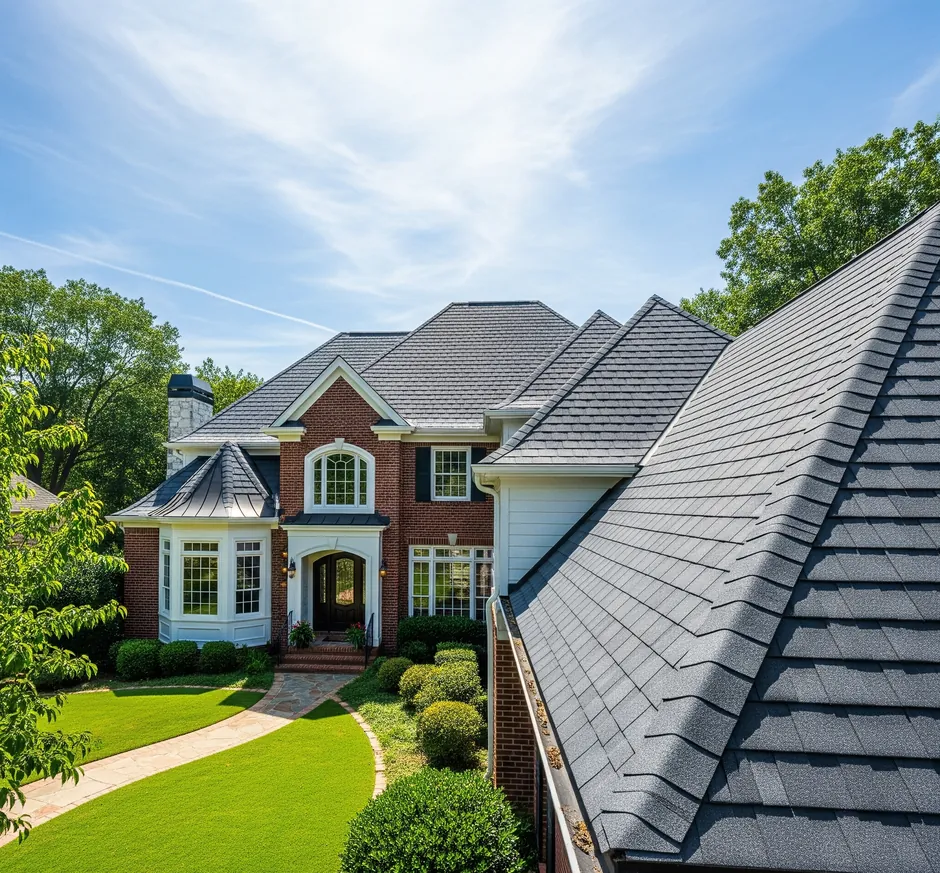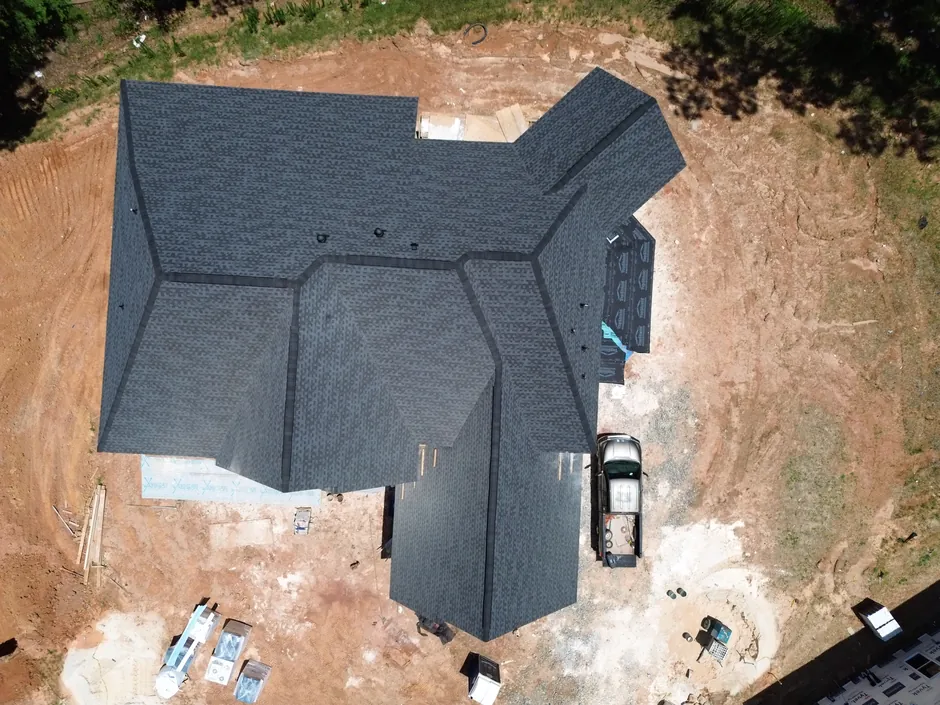Roof Inspection Cumming
Cumming Roof Inspection
Cumming, Georgia, with its proximity to Lake Lanier, mix of historic structures, and rapid suburban growth, presents a unique set of challenges for roof inspections. This technical guide provides property owners, managers, and inspectors with detailed insights into inspection methodologies, local building codes, and specific challenges encountered in Cumming’s diverse roofing landscape.
Critical Components of Cumming Roof Inspections
A comprehensive roof inspection in Cumming typically encompasses the following key areas:
-
Structural Integrity Evaluation
- Assessment of roof decking condition, particularly critical for lakeside properties exposed to high humidity
- Inspection of truss and rafter systems, with attention to both historic and modern framing methods
- Evaluation of roof pitch and drainage systems, crucial in Cumming’s varied topography
-
Roofing Material Analysis
- Detailed examination of asphalt shingles, common in Cumming’s suburban developments
- Assessment of metal roofing systems, increasingly popular for their durability in lake environments
- Evaluation of historic roofing materials found in Cumming’s older structures
-
Moisture and Leak Detection
- Utilization of advanced moisture mapping technology, essential for Cumming’s high-humidity environment
- Inspection of flashing integrity, particularly around chimneys and dormers in older homes
- Assessment of waterproofing systems in below-grade areas of lakeside properties
-
Energy Efficiency and Ventilation Assessment
- Thermal imaging to evaluate insulation effectiveness, crucial in Cumming’s hot summers
- Analysis of attic ventilation systems, critical for preventing moisture buildup in lake-influenced climates
- Evaluation of radiant barrier installations in newer Cumming homes
-
Environmental Impact and Durability Check
- Inspection for algae and moss growth, common in Cumming’s humid, wooded areas
- Assessment of UV damage, particularly severe on lakeside properties
- Evaluation of wind resistance, important due to Cumming’s occasional severe weather patterns
Cutting-Edge Inspection Techniques for Cumming Properties
Cumming’s roofing professionals employ several advanced techniques:
-
Drone-Assisted Aerial Inspections
- High-resolution imagery for detailed visual analysis of hard-to-reach areas on lakeside properties
- 3D modeling of complex roof structures, particularly useful for historic buildings in Cumming
- Thermal mapping to identify moisture intrusion and heat loss patterns
-
Non-Destructive Testing (NDT) Methods
- Infrared thermography for detecting hidden moisture issues, crucial in Cumming’s humid climate
- Ultrasonic pulse echo testing for assessing material thickness and integrity without invasive measures
- Electronic leak detection for pinpointing breaches in flat commercial roofs
-
AI-Enhanced Analysis and Reporting
- Machine learning algorithms for automated defect detection in inspection imagery
- Predictive analytics for estimating roof lifespan based on local environmental factors
- Cloud-based reporting systems for real-time data sharing and historical tracking
 Figure 1: Advanced roof inspection technologies utilized in Cumming, showcasing drone technology and AI-assisted analysis methods
Figure 1: Advanced roof inspection technologies utilized in Cumming, showcasing drone technology and AI-assisted analysis methods
Cumming-Specific Inspection Protocols
Inspectors in Cumming must adhere to local regulations and address unique regional factors:
-
Lakeside Property Considerations
- Specialized assessment of moisture barriers and ventilation in high-humidity environments
- Evaluation of roofing materials’ resistance to water saturation and UV exposure
- Inspection for damage from increased wildlife activity common near Lake Lanier
-
Historic Structure Focus
- Non-invasive inspection techniques for preserving the integrity of Cumming’s historic buildings
- Assessment of compatibility between original roofing materials and modern repair solutions
- Evaluation of load-bearing capacity for potential retrofitting of historic roofs
-
New Development Standards
- Verification of compliance with Cumming’s updated 2024 building codes for new constructions
- Assessment of energy-efficient roofing systems in modern suburban developments
- Inspection of integrated solar panel systems becoming common in new Cumming homes
-
Commercial Property Specializations
- Comprehensive evaluation of large-scale HVAC systems on commercial flat roofs
- Assessment of rooftop equipment mounting systems for telecom installations
- Inspection of green roofing elements in Cumming’s newer eco-friendly commercial buildings
Case Study: Lakeside Historic Property Inspection in Cumming
Location: Lake Lanier shoreline, Cumming Property: Restored 1920s lakeside home with modern additions Challenge: Conducting a cohesive inspection across original and new roofing systems while addressing unique lakeside environmental factors
In fall 2024, the owners of a beautifully restored 1920s home on Lake Lanier commissioned a comprehensive roof inspection. The property featured the original cedar shake roof on the historic portion, connected to a modern addition with architectural asphalt shingles.
Inspection process:
- Utilized drone technology for initial aerial assessment of both roof sections, capturing high-resolution imagery and thermal data.
- Conducted a detailed visual inspection of the cedar shake roof, documenting each shake’s condition and identifying areas of potential water intrusion.
- Performed infrared thermography on both sections to identify any hidden moisture or insulation issues exacerbated by the lakeside environment.
- Employed moisture mapping technology to detect any subsurface water accumulation in the roof decking.
- Assessed the junction between the historic and modern sections for proper integration and water management.
- Evaluated the gutter systems and downspouts, paying special attention to their capacity to handle heavy rainfall common in the area.
- Conducted an interior inspection of the attic space, checking for signs of water intrusion and assessing ventilation adequacy in the high-humidity environment.
Outcome: The inspection revealed several critical findings, including hidden moisture accumulation at the roof junction, deterioration of several cedar shakes due to sustained UV exposure, and inadequate ventilation in the modern addition’s attic space. The comprehensive report provided a restoration plan for the historic section, upgrade recommendations for the modern roof, and specific suggestions for improving overall moisture management in the lakeside setting.
 Figure 2: Diagram illustrating the multi-faceted inspection approach for the lakeside historic property in Cumming, highlighting different roofing materials and environmental considerations
Figure 2: Diagram illustrating the multi-faceted inspection approach for the lakeside historic property in Cumming, highlighting different roofing materials and environmental considerations
Cumming Roof Inspection Regulations and Requirements
Understanding local regulations is crucial for property owners and inspectors in Cumming:
-
Inspection Frequency
- Annual inspections recommended for all lakeside properties
- Bi-annual inspections required for commercial buildings over 10,000 square feet
- Post-severe weather inspections mandated for all municipal buildings and recommended for private properties
-
Certification Requirements
- Inspectors must hold a valid Georgia state license and be certified by a recognized national body
- Additional certification in historic preservation techniques required for inspecting Cumming’s older properties
- Specialized training in lakeside environmental factors recommended for inspectors working near Lake Lanier
-
Reporting Standards
- Digital reports must be filed with Cumming’s Building Department for all commercial inspections
- Use of standardized assessment forms required to ensure consistency across inspections
- Inclusion of moisture content measurements mandatory for all lakeside property inspections
-
Energy Efficiency Compliance
- All inspections must include an energy performance evaluation as of 2024
- Verification of cool roofing compliance for new commercial constructions and major renovations
- Documentation of insulation R-values and ventilation adequacy in all residential inspections
-
Environmental Considerations
- Assessment of stormwater management systems, particularly crucial for properties near Lake Lanier
- Evaluation of roofing material environmental impact and potential for recycling
- Inspection for proper integration of solar energy systems in new constructions
Preparing for a Roof Inspection in Cumming
Property owners can take several steps to ensure a thorough and efficient inspection:
-
Documentation Gathering
- Compile all previous inspection reports, repair records, and original installation documentation
- For historic properties, gather any available historical records or previous preservation work documentation
- Prepare a log of any known issues or recent changes to the roof, particularly noting any lake-related concerns
-
Access Facilitation
- Ensure clear access to all roof areas, including any locked or restricted sections
- Trim overhanging branches that may impede inspection, especially important for wooded lakeside properties
- Clear the area around the building to allow for proper placement of inspection equipment
-
Interior Preparation
- Provide access to attic spaces or upper floors for interior inspection components
- Remove or cover stored items in attic spaces to allow for thorough examination
- Ensure proper lighting in attic spaces for detailed interior inspections
-
Systems Coordination
- For commercial properties, coordinate with HVAC technicians to provide access to rooftop units
- Arrange for temporary deactivation of any solar panel systems for safe inspection
- Ensure security systems are notified to prevent false alarms during the inspection process
-
Post-Inspection Planning
- Schedule a detailed review session to discuss the inspection findings
- Prepare for potential follow-up assessments, especially if specialized testing is recommended
- Allocate resources for addressing any critical issues identified during the inspection, particularly those related to moisture control
Preserving Cumming’s Diverse Roofing Landscape Through Expert Inspection
Thorough and regular roof inspections are essential for maintaining the integrity and longevity of Cumming’s diverse property types. By leveraging advanced technologies, adhering to local regulations, and employing specialized techniques, property owners can protect their investments and ensure the ongoing performance of their roofing systems in Cumming’s unique lake-influenced environment.
Whether you own a historic lakeside property, manage a modern commercial complex, or reside in a new suburban development, partnering with certified inspectors who understand Cumming’s specific roofing challenges is crucial. Regular, professional inspections not only prevent costly damages but also contribute to preserving Cumming’s architectural heritage, enhancing energy efficiency, and maintaining the beauty of this diverse Forsyth County community.